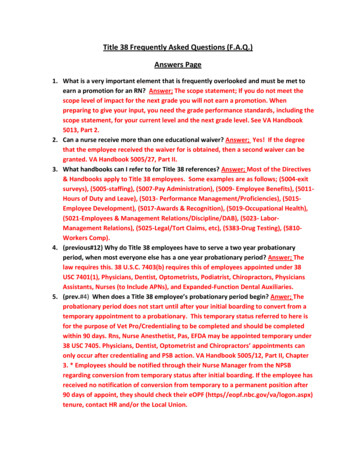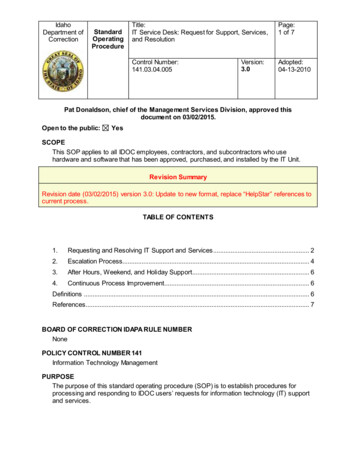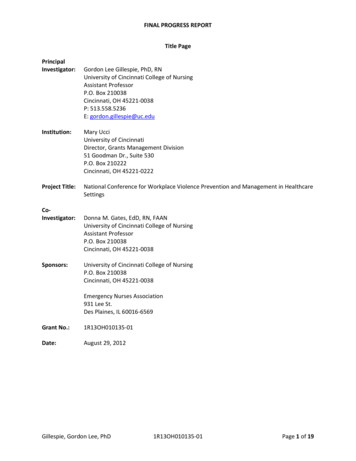
Transcription
FINAL PROGRESS REPORTTitle PagePrincipalInvestigator:Gordon Lee Gillespie, PhD, RNUniversity of Cincinnati College of NursingAssistant ProfessorP.O. Box 210038Cincinnati, OH 45221‐0038P: 513.558.5236E: gordon.gillespie@uc.eduInstitution:Mary UcciUniversity of CincinnatiDirector, Grants Management Division51 Goodman Dr., Suite 530P.O. Box 210222Cincinnati, OH 45221‐0222Project Title:National Conference for Workplace Violence Prevention and Management in HealthcareSettingsCo‐Investigator:Sponsors:Donna M. Gates, EdD, RN, FAANUniversity of Cincinnati College of NursingAssistant ProfessorP.O. Box 210038Cincinnati, OH 45221‐0038University of Cincinnati College of NursingP.O. Box 210038Cincinnati, OH 45221‐0038Emergency Nurses Association931 Lee St.Des Plaines, IL 60016‐6569Grant No.:1R13OH010135‐01Date:August 29, 2012Gillespie, Gordon Lee, PhD1R13OH010135‐01Page 1 of 19
FINAL PROGRESS REPORTTable of ContentsContentPageTitle page1Table of contents2List of terms and abbreviations3Abstract4Section 15Significant (key) findings5Translation of findings5Outcomes/impact6Section 27Science report7Publications18Inclusion of children19Materials available for other investigators19Gillespie, Gordon Lee, PhD1R13OH010135‐01Page 2 of 19
FINAL PROGRESS REPORTList of Terms and AbbreviationsNORA National Occupational Research AgendaU.S.United StatesWPV workplace violenceGillespie, Gordon Lee, PhD1R13OH010135‐01Page 3 of 19
FINAL PROGRESS REPORTAbstractTitle: National Conference for Workplace Violence Prevention and Management in Healthcare SettingsInvestigator: Gordon Lee Gillespie, University of Cincinnati, College of Nursing, Cincinnati, OH 45221(Email: gordon.gillespie@uc.edu)Affiliation: University of CincinnatiState: OHTelephone: 513.558.5236Award Number: 1R13OH010135‐01Start & End Dates: 07/01/2011‐06/30/2012Program Area: Safety and Occupational HealthFinal Report Abstract:Workplace violence (WPV) is a serious and growing problem for healthcare workers. Workplace violenceincludes acts of incivility, bullying, verbal and physical aggression, threatening words or actions, sexualharassment, and physical assaults. Although research in the field of WPV has been growing in recentyears, there has been a lack of opportunities for researchers who study WPV in the healthcare sector tomeet and share findings, theories, and models. Currently researchers in this study area are few andscattered throughout the U.S. Now more than ever there was a critical need for a U.S. based conferenceto be held where the leaders, innovators, educators, and researchers could come together to network,build multi‐disciplinary teams, and share strategies, potential solutions, educational materials, bestpractices, and findings related to the prevention, management, and recovery associated with WPV. Thisconference was the first national U.S. conference in recent history specifically focusing on WPV inhealthcare settings.The conference was held over 2 ½ days from Friday, May 11, 2012 to Sunday, May 13, 2012 at theMarriot Kingsgate Conference Center at the University of Cincinnati Academic Health Center. Theconference hosted four keynote sessions, seven papers sessions, and three poster sessions. Conferenceobjectives (specific aims) were (1) discuss the current epidemiology of incivility, bullying, verbal andphysical aggression, threatening words or actions, sexual harassment, and physical assaults enactedagainst healthcare workers, (2) evaluate intervention programs aimed at preventing and reducing theincidence and sequelae of workplace violence against healthcare workers by visitors, patients,coworkers, and intimate partners, and (3) analyze whether the questions raised during the University ofIowa Injury Prevention Research Center summit of 2000 have been addressed. Program evaluationsfrom the conference attendees indicated that the conference objectives for discussing the currentepidemiology and evaluating intervention programs were met. On the final day of the conference, apanel discussion and consensus building session was hosted and video recorded. Ultimately, the panelmembers concluded that the state of the science for workplace violence has improved in terms ofviolence from patients, visitors, and coworkers; however, there remains a great gap in terms of personalrelationship violence, multidisciplinary populations, and the description and testing of interventionsaiming to prevent, manage, and recover from the workplace violence that occurs in healthcare settings.Gillespie, Gordon Lee, PhD1R13OH010135‐01Page 4 of 19
FINAL PROGRESS REPORTSection 1Significant (Key) Findings:Specific Aim 1: Discuss the current epidemiology of incivility, bullying, verbal and physical aggression,threatening words or actions, sexual harassment, and physical assaults enacted against healthcareworkers.Each conference attendee was asked to rate their agreement that the 1st conference objective (SpecificAim 1) was met based on a Likert rating of 1‐strongly disagree to 5‐strongly agree. The mean score forthis item was 4.65 indicating that conference attendees strongly agreed that this conference objectivewas met.Specific Aim 2: Evaluate intervention programs aimed at preventing and reducing the incidence andsequelae of workplace violence against healthcare workers by visitors, patients, coworkers, and intimatepartners.Each conference attendee was also asked to rate their agreement that the 2nd conference objective(Specific Aim 2) was met based on a Likert rating of 1‐strongly disagree to 5‐strongly agree. The meanscore for this item was 4.6 indicating that conference attendees strongly agreed that this conferenceobjective was met.Specific Aim 3: Analyze whether the questions raised during the University of Iowa Injury PreventionResearch Center summit of 2000 have been addressed.The panel members concluded that the state of the science for workplace violence has improved interms of violence from patients, visitors, and coworkers; however, there remains a great gap in terms ofpersonal relationship violence, multidisciplinary populations, and the description and testing ofinterventions aiming to prevent, manage, and recover from the workplace violence that occurs inhealthcare settings.Translation of Findings:While the findings have not been translated to practice yet, we have received several inquiries to havethe sessions posted to the conference webpage for use by researchers and practitioners. During the fallquarter, the conference proceedings will become freely available to the public for this purpose. Thepanel session was video recorded and will also become available. The panel session provides specificrecommendations for future research and health policy. Researchers and practitioners reviewing theconference proceedings and panel session may translate the information directly to their respectivepractices.In an effort to further “push” the translation of findings to practice, we are working on a special editionof a peer‐reviewed interdisciplinary journal. Thirteen presenters have agreed to write full manuscriptsfor inclusion in this special edition. Recommendations for practice will be included in the manuscripts totargeting practitioners and researchers alike.Gillespie, Gordon Lee, PhD1R13OH010135‐01Page 5 of 19
FINAL PROGRESS REPORTOutcomes/Impact:Potential outcomes of the conference include increased interdisciplinary research. During thenetworking opportunities, several attendees were discussing having speakers coming to their respectivepractice environments (e.g., emergency department) to conduct a risk assessment, speak with theiradministrators on environmental design and risk reduction, and collaborate on future research. Thepanel session was a key element to the conference. During the panel session there were specificresearch recommendations to continue to advance the state of the science for workplace violenceresearch in healthcare settings.Gillespie, Gordon Lee, PhD1R13OH010135‐01Page 6 of 19
FINAL PROGRESS REPORTSection 2Science Report:BackgroundWorkplace violence places an incredible burden upon employees, patients, and employers (Arimatsu etal., 2008; Gacki‐Smith, Juarez, Boyett, Homeyer, Robinson, & MacLean, 2009; Gates, Gillespie, Smith,Rode, Kowalenko, & Smith, 2011; Li, Juarez, & Gates, 2010; NIOSH, 2009). The negative effects ofworkplace assaults for employees include minor and serious physical injuries, temporary and permanentphysical disability, decreased productivity, psychological trauma, and death (Fry et al., 2002; Gates,Gillespie, & Succop, 2011; Gillespie, Gates, Miller, & Howard, 2010; McKinnon & Cross, 2008; NIOSH,2002). Less severe violence such as incivility, bullying, threats, and verbal aggression have also beenlinked to the negative employer outcomes of insomnia, anxiety, depression, and decreased workproductivity (Felblinger, 2008; Gillespie et al., 2010; Hutton & Gates, 2008; Murray, 2009). Adverseconsequences to employers for lower level violence include increased absenteeism, employee turnover,and decreased organizational commitment (Felblinger, 2008; Gillespie et al., 2010; Murray, 2009). It isalso believed that there is a direct consequence to the safety of patients as a result of WPV and aworker’s inability to remain focused and productive at work (Felblinger, 2008; Gates et al., 2011;Gillespie et al., 2010).Workplace violence has been a problem for many years, unfortunately there was no clear direction onwhere the state of the science for WPV research should be focused. In 2000, the University of IowaInjury Prevention Research Center (2001) in collaboration with NIOSH and the National Center for InjuryPrevention and Control addressed the need for a scientific direction of WPV research. The organizationssponsored a WPV intervention research workshop to develop an agenda for WPV research. Keystakeholders from academia, governmental agencies, police, insurance, and private industryparticipated. The outcome from the workshop was specific WPV research recommendations for generalindustry. Despite this phenomenal step towards directing the future of WPV research, there was andcontinues to be minimal interventions conducted for the prevention, management, or recovery fromWPV. Healthcare settings have unique risk factors and circumstance in relation to violence. For example,healthcare providers find it nearly impossible to legally refuse care to violent persons and are not able toleave the work setting due to the risk of being charged with patient abandonment. There remains asignificant need for novel interventions to tackle the problem of WPV in healthcare settings. Thecompleted conference allowed the collection and dissemination of research to the scientific community;thereby, depicting the research progress that specifically relates to healthcare settings made since theseminal conference in April 2000.Specific AimsWorkplace violence (WPV) is a serious and growing problem for healthcare workers. Workplace violenceincludes acts of incivility, bullying, verbal and physical aggression, threatening words or actions, sexualharassment, and physical assaults. Although research in the field of WPV has been growing in recentyears, there has been a lack of opportunities for researchers who study WPV in the healthcare sector tomeet and share findings, theories, and models. Currently researchers in this study area are few andscattered throughout the U.S. Now more than ever there was a critical need for a U.S. based conferenceto be held where the leaders, innovators, educators, and researchers could come together to network,build multi‐disciplinary teams, and share strategies, potential solutions, educational materials, bestGillespie, Gordon Lee, PhD1R13OH010135‐01Page 7 of 19
FINAL PROGRESS REPORTpractices, and findings related to the prevention, management, and recovery associated with WPV. Thisconference was the first national U.S. conference in recent history specifically focusing on WPV inhealthcare settings.The completed conference was specifically relevant to the National Occupational Research Agenda(NORA) (NORA Healthcare and Social Assistance Sector Council, 2009). The Healthcare and SocialAssistance Council established a NORA specific plan and strategy to promote safe and healthyworkplaces. The objectives of this conference assisted the National Institute for Occupational Safety andHealth (NIOSH) to meet their mission to address the NORA Healthcare and Social Assistance Council’sstrategy for safe and healthy workplaces.The specific objectives of this conference were to:1. Discuss the current epidemiology of incivility, bullying, verbal and physical aggression,threatening words or actions, sexual harassment, and physical assaults enacted againsthealthcare workers.2. Evaluate intervention programs aimed at preventing and reducing the incidence and sequelae ofworkplace violence against healthcare workers by visitors, patients, coworkers, and intimatepartners.3. Analyze whether the questions raised during the University of Iowa Injury Prevention ResearchCenter summit of 2000 have been addressed.MethodologyCall for abstracts and conference advertisement.The Conference Committee partnered with the Emergency Nurses Association (ENA, Des Plaines, IL) forthe call for abstracts as well as conference advertisement. Additionally, the continuing educationcoordinators for the U.S. Educational Research Centers (ERCs) affiliated with the CDC‐NIOSHdisseminated the conference call for abstracts and advertisements to the constituents of theirrespective listservs. An invitation was also emailed directly to 678 researchers that published findings ofworkplace violence research (based on literature search using SCOPUS peer‐reviewed journal database);deans of U.S. colleges of nursing, psychology, and criminal justice; and presenters of workplace violenceresearch at recent occupational health conferences.Peer review.Fifty abstracts were received and underwent a double‐blind peer review process by three independentpeer reviewers. The double‐blind peer review process was managed by UC Conference and EventServices. Peer reviewers were from the disciplines of criminal justice, medicine, nursing, pharmacy, andpsychology. Abstracts were rank‐ordered based on their meritorious score from highest to lowest.Authors of the highest ranked abstracts were offered to be a paper presenter. Some authors preferredto be a poster presenter and were assigned to a poster session per their request. Authors not acceptedfor a paper session were offered to be a poster presenter. Ultimately, 43 abstracts were accepted forpresentation at the conference.Gillespie, Gordon Lee, PhD1R13OH010135‐01Page 8 of 19
FINAL PROGRESS REPORTResultsThe conference was held over 2 ½ days from Friday, May 11, 2012 to Sunday, May 13, 2012 at theMarriot Kingsgate Conference Center at the University of Cincinnati Academic Health Center. Theconference hosted four keynote sessions, seven papers sessions, and three poster sessions. On sitemanagement with attendees, speakers, and the hotel/conference was coordinated by UC Conferenceand Event Services.The four keynote presenters were Drs. Paula Grubb, David Yamada, Scott Bresler, and Donna Gates. Dr.Paula Grubb is a research psychologist with CDC‐NIOSH and spoke on Incivility in the Workplace. Dr.David Yamada is a Professor of Law and the Director of the New Workplace Institute at the SuffolkUniversity Law School. He spoke on Workplace Bullying in Healthcare. Dr. Scott Bresler is a psychologistand Clinical Director in the Division of Forensic Psychiatry at the University of Cincinnati. Hispresentation was titled Physical Violence against Healthcare Workers. Dr. Donna Gates is an adjunctfaculty with the University of Cincinnati College of Nursing. She spoke on the Environmental Context ofWorkplace Violence.Paper sessions.There were twenty abstracts presented during the seven paper sessions. A summary of the papersessions is provided in Table 1.Table 1.Poster abstracts presented during the conference.SessionPaper session 1:Epidemiology of workplaceviolence in healthcare settingsPaper session 2:A global perspective ofworkplace violenceGillespie, Gordon Lee, PhDPresenterTraci Galinsky, ResearchPsychologist, CDC‐NIOSH,Cincinnati, OHJulie Shaw, Sr. Clinical DirectorEmergency Services, CincinnatiChildren’s Hospital MedicalCenter, Cincinnati, OHMarilyn Ridenour, CDC‐NIOSH,Morgantown, WVAnnMarie Papa, Clinical DirectorEmergency Nursing, Hospital ofthe University of Pennsylvania,Glenside, PAAhlam Al‐Natour, DoctoralStudent, University of CincinnatiCollege of Nursing, Cincinnati,OH1R13OH010135‐01Abstract TitleAssaults of workers by patientsin home health careStaff perceptions of workplacesafety in a pediatric emergencydepartmentShift differences of workplaceviolence on psychiatric staffWhat is violence? Aninternational perspectiveViolence against Jordaniannurses by the intimate partner orfamily memberPage 9 of 19
FINAL PROGRESS REPORTSessionPaper session 3:Developing our humanresources for the managementof workplace violencePaper session 4:Workplace incivility and bullyingPaper session 5:Novel approaches foraddressing workplace violencePresenterDaniel Hartley, Epidemiologist,CDC‐NIOSH, Morgantown, WVMaryalice Nocera, ProjectDirector of the Injury PreventionResearch Center, University ofNorth Carolina, Chapel Hill, NCPeggy Berry, Doctoral Student,University of Cincinnati Collegeof Nursing, Cincinnati, OHShellie Simons, AssistantProfessor Nursing, University ofMassachusetts Lowell, Sharon,MAVicki Magley, Associate ProfessorPsychology, University ofConnecticut, Storrs, CTWendy Budin, Director ofNursing Research, NYU LangoneMedical CenterJudith Arnetz, AssociateProfessor, Department of FamilyMedicine and Public HealthScience, Wayne State UniversitySchool of Medicine, Detroit, MIJohn‐Robert Curtin, FoundingDirector of the 4Civility Institute,Louisville, KYAdam Hill, Clinical Director,Division of Child and AdolescentPsychiatry, Cincinnati Children’sHospital Medical Center,Cincinnati, OHGillespie, Gordon Lee, PhD1R13OH010135‐01Abstract TitleWorkplace violence preventionon‐line course: Research anddevelopmentWorkplace violence preventiontraining and the prevalence ofphysical assault among homehealth and hospice workersThe effects of workplace bullyingon the productivity of novicenursesA qualitative study of copingstrategies used by nursesexperiencing bullying at workInitial evaluation of the civilityamong healthcare professionals(CAHP) workshopRelationships among verbalabuse from nurse colleagues anddemographic characteristics,work attributes, and workenvironment of early careerregistered nursesUsing database reports toreduce workplace violence:Perceptions of hospitalstakeholdersWorkplace incivility, harassment,and bullying in healthcareorganizations: Practical solutionsto create a health healthcareenvironmentMeasureable results: Reducingstaff injuries on a specialtypsychiatric unit for patients withdevelopmental disabilitiesPage 10 of 19
FINAL PROGRESS REPORTSessionPaper session 6:The integration of theory topractice for workplace violencePresenterChristian Burchill, Clinical NurseIV, Emergency Department,University of PennsylvaniaHealth System, Philadelphia, PALinda Robinson, Clinical Nurse,Emergency Department, St.Elizabeth Healthcare, Edgewood,KYAri Cowan, Co‐director of theCAN International Institute,Bellevue, WAPaper session 7:Consequences of workplaceviolenceTracy Whitaker, Director of theCenter for Workforce Studies,National Association of SocialWorkers, Washington, DCMelissa Taylor, TriHealth,Cincinnati, OHChristina Purpora, AssistantProfessor, School of Nursing andHealth Professions, University ofSan Francisco, San Francisco, CAAbstract TitleFactors that influenceperceptions of personal safetyfor emergency nurses:Development of a validassessment toolWorkplace violence prevention:From a fragmented to anintegrated approachThe violence integrativ
Gillespie, Gordon Lee, PhD 1R13OH010135‐01 Page 1 of 19 Title Page Principal Investigator: Gordon Lee Gillespie, PhD, RN University of Cincinnati College of Nursing Assistant Professor P.O. Box 210038 Cincinnati, OH 45221‐0038 P:
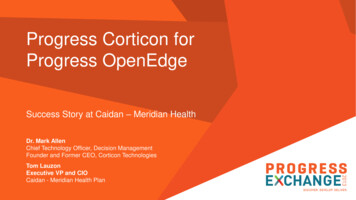


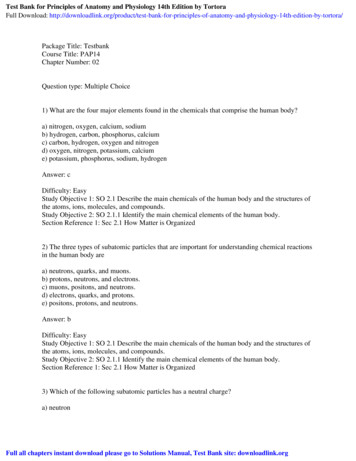


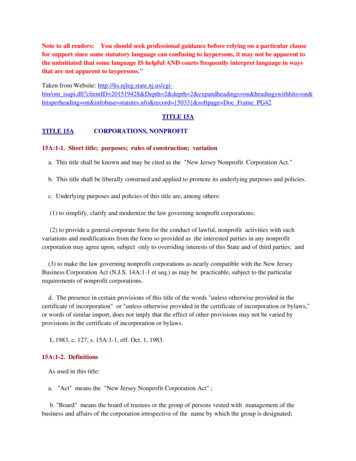
![Last or Business First [Maiden] Page Title Notes](/img/1/saukcity125thjubilee-20historical-20album-index.jpg)

